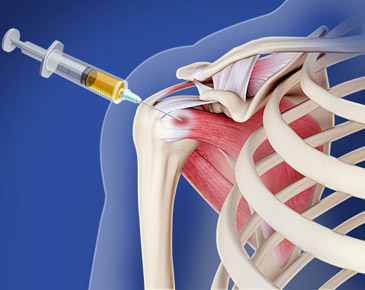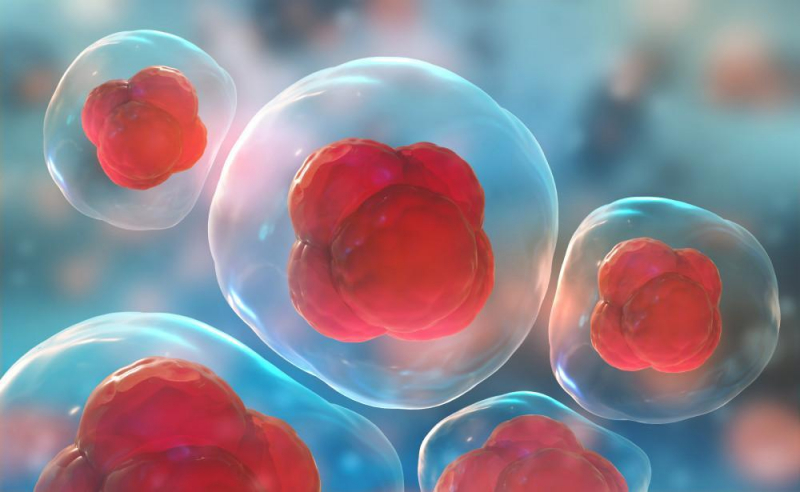Stem cell therapy holds significant potential for Duchenne Muscular Dystrophy (DMD), a genetic disorder characterized by progressive muscle degeneration due to the lack of a functional protein called dystrophin. Dystrophin is crucial for maintaining the structure of muscle fibers, and its absence leads to the breakdown of muscle tissue. Over time, this results in severe weakness, loss of mobility, and early death.
While there is no cure for DMD at present, stem cell therapy offers a promising approach to manage and potentially treat the disorder by either replacing the damaged muscle tissue, regenerating muscle cells, or correcting the underlying genetic defect. Here's how stem cell therapy can help in the context of Duchenne Muscular Dystrophy:
1. Stem Cell-Based Muscle Regeneration
DMD causes muscle fibers to be replaced by scar tissue and fat over time, leading to muscle atrophy. Stem cell therapy can potentially regenerate these damaged muscle fibers by introducing stem cells that can differentiate into healthy muscle cells.
Muscle-Derived Stem Cells: Researchers are exploring muscle stem cells (called satellite cells), which naturally exist in muscle tissue and help repair muscle damage. In DMD patients, these cells are often ineffective due to the lack of dystrophin. However, with stem cell therapy, scientists can potentially use healthy satellite cells or derive new muscle cells from mesenchymal stem cells (MSCs) or induced pluripotent stem cells (iPSCs).
Cell Transplantation: Stem cells, once differentiated into muscle cells, can be transplanted into the patient's body to replace damaged muscle tissue. This can help regenerate functional muscle fibers and slow the progression of muscle degeneration.
2. Gene Editing to Correct Dystrophin Deficiency
DMD is caused by mutations in the dystrophin gene, which prevents the production of functional dystrophin protein. One of the most exciting aspects of stem cell therapy for DMD is the use of gene editing techniques to correct this genetic defect at the DNA level.
CRISPR-Cas9 Gene Editing: Researchers are exploring the use of CRISPR-Cas9 gene editing to correct the specific mutation in the dystrophin gene. Stem cells (such as iPSCs derived from the patient’s own cells) can be genetically edited to carry a functional copy of the dystrophin gene. Once corrected, these stem cells can be differentiated into muscle cells and transplanted back into the patient’s body, effectively restoring dystrophin production in muscle fibers.
Exon Skipping: Another approach involves exon skipping, where specific segments of the mutated gene are skipped to allow for the production of a partially functional version of dystrophin. This approach can be used in conjunction with stem cells to restore some dystrophin function in patients with certain mutations that would otherwise be untreatable by conventional gene therapy.
3. Induced Pluripotent Stem Cells (iPSCs)
iPSCs are generated by reprogramming a patient’s adult cells (such as skin cells) into pluripotent stem cells, which have the ability to differentiate into any cell type. This approach offers a significant advantage because it uses the patient’s own cells, which reduces the risk of immune rejection.
iPSC-Derived Muscle Cells: Researchers are investigating how iPSCs can be used to generate functional muscle cells that express dystrophin. These cells could be transplanted into the patient to replace the damaged muscle tissue and improve muscle function.
Personalized Treatment: By creating iPSCs from a patient’s own tissue, researchers can model the disease in the lab and test potential treatments before they are applied to the patient. This approach can lead to personalized therapies tailored to the genetic profile of the patient’s disease.
4. Mesenchymal Stem Cells (MSCs) and Muscle Regeneration
Mesenchymal stem cells (MSCs), found in various tissues like bone marrow, fat, and umbilical cord blood, have the potential to differentiate into muscle cells and promote muscle regeneration. MSCs can also release various factors that promote healing and reduce inflammation.
MSC Therapy: MSCs can be isolated, expanded in the lab, and then injected into the muscles of DMD patients to promote muscle repair and regeneration. These cells can also secrete growth factors that encourage tissue healing and muscle regeneration, potentially slowing the progression of the disease.
Anti-inflammatory Effects: MSCs have demonstrated the ability to reduce inflammation in muscle tissue, which is important in DMD because inflammation accelerates muscle damage. By reducing inflammation, MSCs can help maintain muscle function and prolong the health of existing muscle fibers.
5. Cell-based Therapy and Reducing Muscle Fibrosis
One of the challenges in DMD is the accumulation of scar tissue (fibrosis) as muscle tissue is replaced. Fibrosis impedes muscle function and prevents the successful regeneration of muscle fibers. Stem cells can potentially help mitigate this process.
Fibrosis Inhibition: MSCs, when applied in DMD, may not only differentiate into muscle cells but also help inhibit the formation of excessive scar tissue. This would enable better integration of new muscle cells and improve the overall effectiveness of muscle regeneration.
6. Improving Muscle Strength and Function
By promoting the regeneration of muscle fibers and reducing fibrosis, stem cell therapies can help improve muscle strength and function in DMD patients. This is important for maintaining mobility and quality of life as the disease progresses.
Functional Recovery: Stem cell therapy could potentially improve motor function, increase muscle strength, and slow the rate of muscle decline in patients with DMD. For example, by increasing the number of healthy muscle fibers in the patient’s body, the remaining muscle cells would have to do less work, improving overall muscle function.
7. Clinical Research and Trials
There have been several clinical trials using stem cell therapies for DMD, with promising results, although challenges remain in terms of long-term outcomes and safety.
Hematopoietic Stem Cell Transplants: In some studies, bone marrow transplants from healthy donors have been used to replace defective muscle cells in DMD patients. This method is still in experimental stages but holds promise for some patients.
Gene Editing Trials: Clinical trials using CRISPR-Cas9 and other gene-editing tools to correct the dystrophin gene in muscle tissue are ongoing, with some early success in generating dystrophin-producing muscle fibers.
Challenges and Limitations
While stem cell therapies for DMD show great potential, several challenges need to be overcome:
Efficacy and Long-Term Effects: Ensuring that transplanted stem cells integrate successfully into the muscle tissue and provide long-lasting benefits is a key challenge. The durability of stem cell-based muscle regeneration is still under investigation.
Immune Rejection: Although using autologous stem cells (stem cells derived from the patient’s own body) reduces the risk of immune rejection, the use of allogeneic stem cells (from donors) still carries a risk of immune complications.
Ethical and Regulatory Concerns: The use of gene editing, particularly in human embryos, raises ethical concerns and regulatory challenges. Clinical applications of gene therapy and stem cell therapy need to undergo rigorous testing for safety and effectiveness.
Stem cell therapy holds great promise for cardiovascular diseases, offering the potential to regenerate damaged heart tissue, improve blood flow, reduce inflammation, and restore heart function. It represents an exciting avenue for treating chronic heart conditions, such as heart failure and coronary artery disease, that have limited treatment options. However, more research and clinical trials are necessary to fully understand the long-term effects and risks associated with these therapies. As the science advances, stem cells could play an increasingly important role in treating heart disease, improving patient outcomes, and reducing the need for heart transplants or other invasive interventions.

1. Gene Editing and Stem Cells:
Stem cells can be used as a platform to apply gene editing techniques like CRISPR-Cas9 to correct genetic mutations. This combination of stem cells and gene editing allows for the direct correction of defective genes in the patient’s cells.
Ex Vivo Gene Editing: In this method, stem cells (often hematopoietic stem cells, mesenchymal stem cells (MSCs), or induced pluripotent stem cells (iPSCs)) are extracted from the patient. These cells are then edited outside the body (ex vivo) to correct genetic mutations. After the editing process, the corrected stem cells are transplanted back into the patient. This approach has been used for genetic blood disorders like sickle cell anemia and beta-thalassemia, where the patient's own stem cells are edited to correct the mutation and then reintroduced to produce healthy blood cells.
In Vivo Gene Editing: Gene editing can also be done inside the body using stem cells that are capable of integrating the corrected gene into the patient's tissues. However, in vivo editing using stem cells is still largely experimental and involves challenges such as effective delivery of the editing tools to the right cells.
2. Gene Delivery via Stem Cells:
Stem cells can act as vectors for delivering corrected or therapeutic genes directly into the patient’s tissues. This method can be especially beneficial for conditions where specific tissues need to be targeted.
Mesenchymal Stem Cells (MSCs): MSCs have been explored as carriers for gene therapy due to their ability to home in on areas of tissue damage or inflammation. For example, in cystic fibrosis, MSCs can be engineered to deliver a functional copy of the CFTR gene (the defective gene in cystic fibrosis) directly to the lung tissue, where it can replace the faulty gene and restore normal lung function.
iPSCs (Induced Pluripotent Stem Cells): iPSCs can be derived from the patient's own cells, reducing the risk of immune rejection. They can be genetically modified to carry a healthy version of the gene that is defective in the patient’s body and then differentiated into the necessary cell type (e.g., liver cells for alpha-1 antitrypsin deficiency or muscle cells for Duchenne muscular dystrophy) before being introduced into the patient.
3. Stem Cells and Genetic Disease Models:
Stem cells, particularly iPSCs, can be used to create patient-specific disease models. This allows researchers to study the genetic disorder in a lab setting and test potential gene therapies before applying them to the patient.
Disease Modeling: By taking a patient’s cells (e.g., skin cells) and reprogramming them into iPSCs, researchers can generate the specific type of cells that are affected by the genetic disorder (such as nerve cells in Parkinson’s disease or muscle cells in Duchenne muscular dystrophy). This model can be used to study the disease at the cellular level and test different gene therapies or drug treatments in a controlled environment, increasing the likelihood of finding a successful therapy.
Drug Screening: Using iPSCs derived from patients with genetic disorders, researchers can screen for potential drugs or gene therapies that could correct the genetic defects, offering a personalized approach to treatment.
4. Stem Cells and Tissue Regeneration:
In some genetic disorders, stem cells not only provide a method for gene therapy but also help regenerate the damaged tissues that result from the disease. For example:
Duchenne Muscular Dystrophy (DMD): DMD is a genetic disorder that causes muscle degeneration. Stem cells (especially muscle-derived stem cells) can be used to regenerate muscle tissue. These stem cells can be genetically modified to carry a corrected version of the dystrophin gene (the defective gene in DMD), which helps repair the damaged muscle fibers and restore muscle function.
Cystic Fibrosis: Stem cells can regenerate lung tissue in patients with cystic fibrosis, and with gene therapy, these stem cells can be genetically corrected to produce a functional CFTR protein, providing a dual benefit of both tissue regeneration and genetic correction.
5. Overcoming the Limitations of Gene Therapy:
Gene therapy faces several challenges, including difficulties in effectively delivering therapeutic genes to the right cells, ensuring long-term gene expression, and overcoming immune responses. Stem cells can help address some of these limitations:
Long-Term Gene Expression: Stem cells have the potential to divide and renew over time. When stem cells are used for gene therapy, they can continue to produce the therapeutic gene throughout the patient’s lifetime. This is particularly helpful for genetic disorders where the gene therapy needs to be continuously expressed, such as in hemophilia (where a clotting factor needs to be continuously produced) or cystic fibrosis (where CFTR production is needed to maintain healthy lung function).

Reducing Immune Rejection: Using autologous stem cells (stem cells derived from the patient’s own body) for gene therapy reduces the risk of immune rejection. This is particularly important in diseases where long-term treatment is required. For example, using the patient’s own iPSCs, which are genetically identical to the patient’s cells, can minimize the risk of the immune system attacking the newly introduced genetically modified cells.
6. Examples of Genetic Disorders Treated with Stem Cell and Gene Therapy
Sickle Cell Anemia: Using stem cells, researchers have successfully corrected the mutation in the hemoglobin gene using CRISPR-Cas9 and transplanted the edited stem cells back into patients. This has shown promise as a potential cure for sickle cell disease.
Beta-Thalassemia: Similar to sickle cell anemia, gene therapy using stem cells has been used to correct the mutations in the beta-globin gene, offering hope for patients with this blood disorder.
Cystic Fibrosis: Stem cells derived from the patient’s lungs or other tissues can be edited with a functional CFTR gene and then reintroduced into the patient, potentially correcting the underlying defect.
Duchenne Muscular Dystrophy: Stem cell therapy, combined with gene editing, has the potential to replace or repair the defective dystrophin gene, regenerating muscle tissue and improving muscle strength.
7. Challenges and Future Directions
Safety: Gene therapy involving stem cells raises concerns about the possibility of tumor formation or unwanted genetic changes. Ensuring the safety of stem cells after genetic modification is critical.
Efficiency of Delivery: Efficiently delivering the edited genes or therapeutic genes to the right cells remains a challenge. Research is focused on improving the delivery methods to ensure that gene therapy reaches its target tissue effectively.
Ethical Concerns: The use of stem cells, particularly embryonic stem cells.






